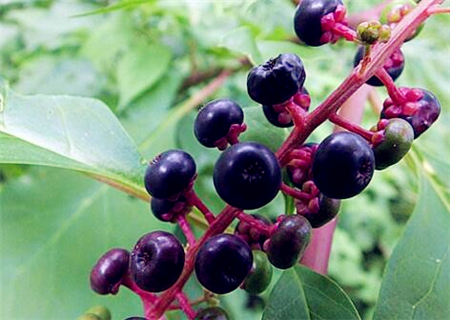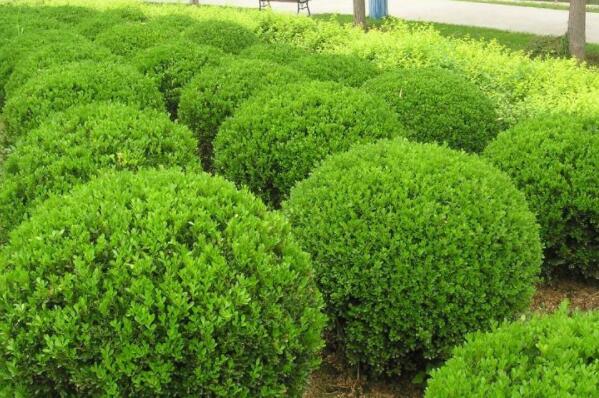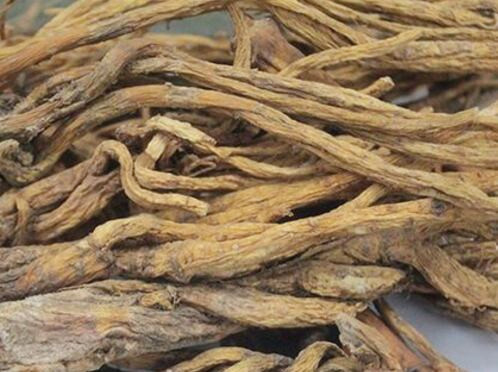How much is the price of Phytolacca per jin now? What is the main place of origin? When is the best time to dig? Planting prospects and economy
Phytolacca, Phytolacca, Phytolacca is a sturdy perennial herb. The main varieties distributed in China are Phytolacca (wild radish) and vertical Phytolacca (Phytolacca, Phytolacca, Phytolacca). So how much is the price of Phytolacca now? What is the main place of origin? What are the planting prospects and economic benefits?

In fact, Phytolacca is not ginseng, so the price of Phytolacca is not the same as ginseng. Phytolacca is both beneficial and poisonous, and it is common that it likes to grow in wet places, which is often found in villages all over the country. The price of processed dry pokeweed is only a few yuan per jin, and the general drugstore seldom buys it. Because there are few prescriptions. It is true that Phytolacca is called wild ginseng in Shandong, but this is by no means ginseng. There will be symptoms such as vomiting and dizziness after eating. I suggest you identify it carefully and don't eat it by mistake.
The prices of Phytolacca are varied, ranging from a few yuan a bag to thousands of yuan a box, no matter how expensive or low the price is. Phytolacca is easy to reproduce, and its roots and seeds can reproduce. Generally, seed direct seeding and fleshy root colonization can be used. From August to September, the mother plant of green stem was selected, harvested when the fruit turned purple-black, rubbed in water to remove the skin, and dried, so everyone should choose their own Phytolacca according to their own needs.
What are the planting prospects and economic benefits?
Dried root of Phytolacca officinalis. From autumn to next spring, remove fibrous roots and sediment, cut into pieces or slices, dry in the sun or in the shade.
When the root is used in medicine, it is better for those with white hypertrophy, while the red root is highly toxic and is for external use only. Tonger defecation, water, loose knots, treatment of edema, fullness, beriberi, throat arthralgia, external application to treat carbuncle swelling and sore poison. It can also be used as veterinary medicine and pesticide. The fruit contains tannin and can be extracted from tannin extract. Tender stems and leaves can be eaten as vegetables.
Phytolacca is mainly produced in Henan, Hubei, Shandong, Zhejiang, Jiangxi and so on.
Planting techniques of Phytolacca
1. Field management: pokeweed is watered twice after setting seedlings or during severe drought, and when soil moisture is suitable, the soil is loosened and weeded shallowly, keeping the soil surface sparse orange, moist and weed-free. Shang Lu blossoms from June to August, except for those who keep the seed, cut off all the flower moss and reduce the nutrient consumption. In order to make Phytolacca survive the winter safely and increase the fertilizer of organic matter in the soil, 6000 kg / ha of chopped firewood grass such as wheat and rice bran were sprinkled in the fields planted in late autumn and early winter.
2. Reasonable topdressing: the leaves of Phytolacca acinosa seedlings are sprayed with 0.5% urea solution, a small amount for many times, with a total amount of no more than 225 kg / ha. In the next spring, before the plant emerged, a shallow trench was opened between the two rows and about 1200 kg / ha of potassium sulfate higher education compound fertilizer was applied. From July to August, spray 1% potassium sulfate or 0.3% potassium dihydrogen phosphate about 1800 kg / ha, once every 15 days, 3 times in a row.
3. Disease and pest control: there is no disease in the whole growth period of Phytolacca. Because the stems and leaves are tender, the main pests are aphids. 40% gram aphid 600 times liquid, 25% aldicarb 1000 times liquid can be used for 3 times and 2 times respectively, and the safe interval is 7 days. Sometimes there will be the harm of root rot, the aboveground parts of the damaged plants wither, the rhizomes turn brown, and when the roots rot seriously. Select good drainage plots for planting, timely drainage in the rainy season, and disinfect the soil with 70% pentachloronitrobenzene (15 kg / ha).
Time: 2019-03-19 Click:
- Prev

How much is the price of "hedge material" lobular privet seedlings? When does it blossom? How to plant it? What about bonsai?
Lobular Ligustrum lucidum is a small shrub of the genus Ligustrum lucidum in Oleaceae, also known as holly, small white wax, neem green, lobular wax tree, is an excellent tree species for bonsai production. How much is the seedling of Ligustrum lucidum? When does it blossom? How to plant it? How to maintain bonsai? How much is the seedling of Ligustrum lucidum?
- Next

How much does gentian branch gentian seed price a catty? How to grow? What are the effects and functions?
Gentiana macrophylla, alias: Gentiana macrophylla, Gentiana macrophylla, Gentiana macrophylla. Produced in Mongolia, Russia, the mainland of China of Inner Mongolia, Ningxia, Hebei, Shaanxi, **, Northeast, Shanxi and other places. Has extremely high medicinal value. So, how much is the price of Gentiana seed? How to grow? What are the effects and functions? it is understood
Related
- Fuxing push coffee new agricultural production and marketing class: lack of small-scale processing plants
- Jujube rice field leisure farm deep ploughing Yilan for five years to create a space for organic food and play
- Nongyu Farm-A trial of organic papaya for brave women with advanced technology
- Four points for attention in the prevention and control of diseases and insect pests of edible fungi
- How to add nutrient solution to Edible Fungi
- Is there any good way to control edible fungus mites?
- Open Inoculation Technology of Edible Fungi
- Is there any clever way to use fertilizer for edible fungus in winter?
- What agents are used to kill the pathogens of edible fungi in the mushroom shed?
- Rapid drying of Edible Fungi

